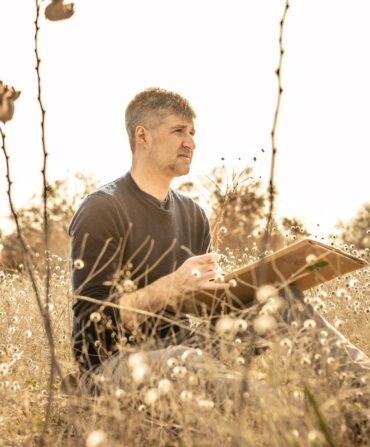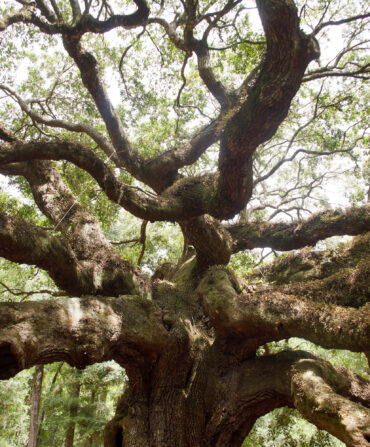Land & Conservation
How to Disentangle a Forty-Foot Right Whale
Every winter, the coasts of Georgia and Florida become the front line in the fight to save a critically endangered species. A day in the life of the heroes doing the work
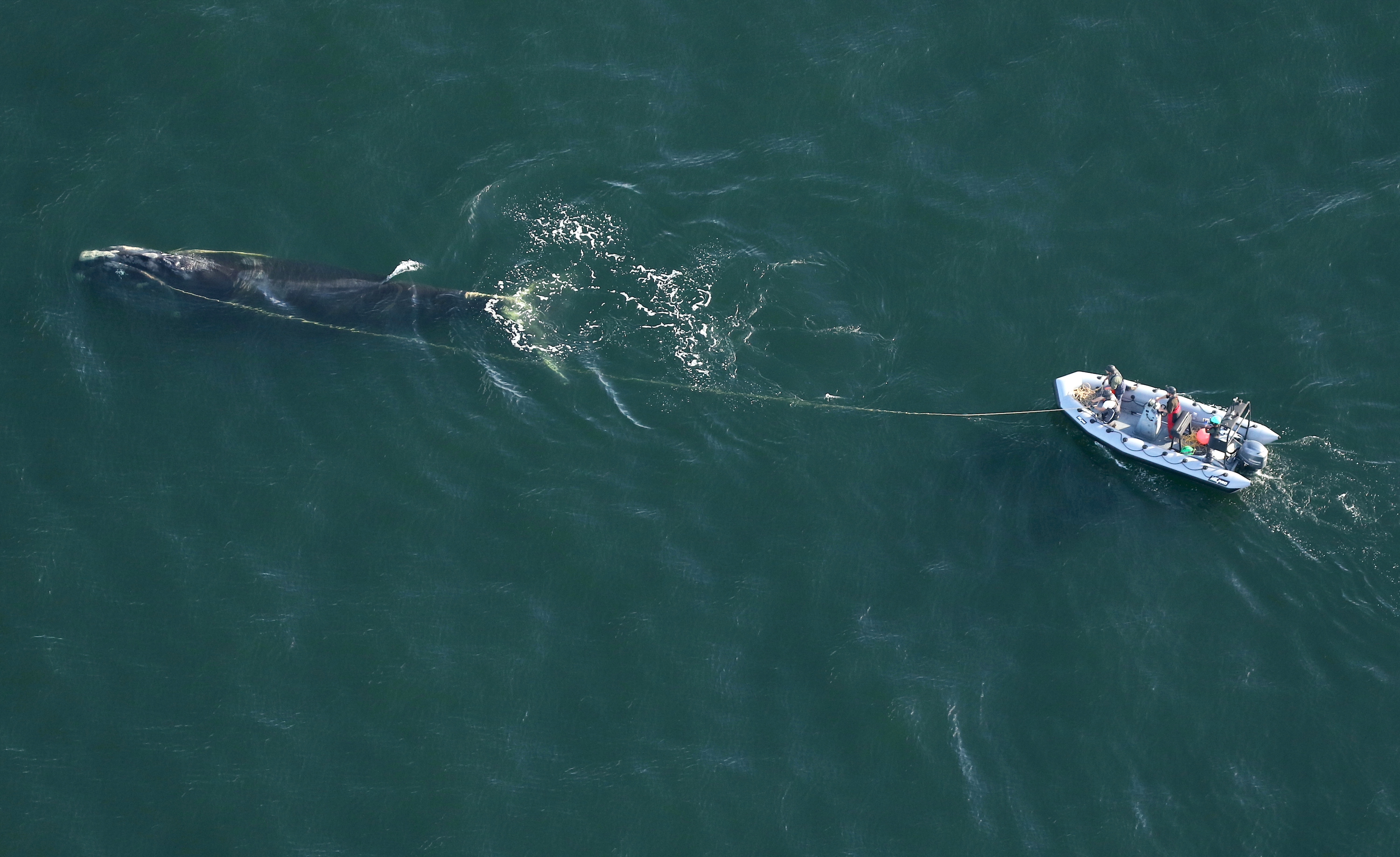
Photo: CMARI w/ NOAA permit #24359
A rescue team works to remove hundreds of feet of fishing rope from Nimbus, a fifteen-year-old North Atlantic right whale, off the coast of Jekyll Island, Georgia, on January 20, 2023.
Even for someone with a remarkable day job, January 20, 2023 was a remarkable day for Melanie White. A biologist with Florida’s Clearwater Marine Aquarium Research Institute, White spends every fair-weather day from December through February in a twin-engine Cessna Skymaster, scouring the Atlantic Ocean for right whales as they migrate near Georgia and Florida to give birth. The work can be slow, in part because the animals are difficult to spot (the species lacks a dorsal fin, a feature that leaves them vulnerable to boat strikes), but mostly because they are so few. Scientists estimate that fewer than 350 North Atlantic right whales remain, among them fewer than seventy-five reproductively active females. A good day might bring one whale sighting. A great one, a mother and her calf.
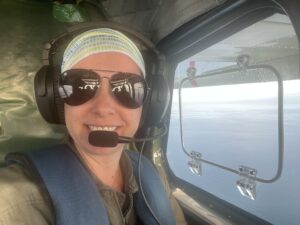
Photo: courtesy of Melanie White
Melanie White, a biologist and aerial observer with the Clearwater Marine Aquarium Research Institute, in the field.
On the morning of January 20, White and three crewmates were flying near Georgia’s Blackbeard Island when they spotted just that—the eleventh such pair of the season. They recognized the mom as a whale named Pediddle, who sports a bright scar on the side of her black head that looks like a single car headlight. In the white-knuckle math of right whale conservation, every calf is crucial. Last year saw fifteen documented births, and while this season’s tally won’t be final for another month or so, it won’t be enough to stop the slide. In recent years, about thirty North Atlantic right whales have died annually, most from human causes.
While White’s team was tracking Pediddle, Clay George was on the water not far away, patrolling by boat. A senior wildlife biologist with the Georgia Department of Natural Resources, George has spent the last fifteen years collecting skin samples from right whale calves, which he obtains with a biopsy dart shot by crossbow. He’s also the lead responder when a whale is found ensnared in fishing gear—one of only two people in the Southeast trained to oversee such rescues—and as it happened, another whale had been spotted that morning, thirteen miles east of Jekyll Island, Georgia, by an aerial crew from the Florida Fish and Wildlife Conservation Commission (FWC): a lone male, dragging some four hundred feet of fishing rope.

Photo: FWC w/ NOAA permit #24359
Nimbus, named for the cloudlike markings on his head, is shown here entangled in fishing rope, which rescuers believe he dragged from the northeastern United States or Canada. The rope will be sent to NOAA Fisheries to determine its origin.
The world of right whale conservation is tight-knit and well coordinated. George headed toward Jekyll, where he would meet crews from the Georgia DNR, FWC, and NOAA. White’s team, meanwhile, was told to stand by and relieve the FWC aircraft when it ran out of fuel. “Pretty much the entire Southeast was focused on this particular whale,” she says. They were also looking out for each other. Any interaction with a forty-ton, forty-foot-long animal brings inherent danger. “Right whales are pretty obstinate and very flexible,” says Mark Dodd, a Georgia DNR wildlife biologist who was on the scene. “If you’re along the side of the whale, you’re a target.”
In 2017, Canadian rescuer Joe Howlett died moments after freeing an entangled right whale when the animal’s tail, or fluke, struck him, likely killing him instantly. George, who knew Howlett and his team, says most of his training concerns the human element. “At the end of the day, our primary objective is getting home safely.”
By 2:15 p.m. George and three other responders—Trip Kolkmeyer, Jen Jakush, and Lisa Conger—had jumped into a Georgia DNR center-console and approached the whale, identified as fifteen-year-old Nimbus. A half-inch-thick rope draped through Nimbus’s mouth like a piece of stuck dental floss (only with baleen plates instead of teeth) and cascaded behind and beneath him in the murky water. To this rope the team swiftly attached a tracking buoy so that when Nimbus dove, they could follow him. Then they cut the length of rope behind the buoy—some two hundred feet of it—to lighten his load.

Photo: PETER FRANK EDWARDS
Clay George, senior wildlife biologist with the Georgia Department of Natural Resources, led Nimbus’s rescue response.
Next, they sent up a drone to get a better view of the entanglement, which might prove beyond their capabilities. In March 2021, a seventeen-year-old pregnant female named Snow Cone was found wrapped in fishing rope off Cape Cod; rescuers removed what they could, but it remained tightly embedded in her jaw. George encountered her that December, remarkably with a calf in tow. But the severity of the entanglement coupled with the hazard of the calf swimming beside her made intervention impossible. “We just had to stand down all season as she was sighted multiple times,” he recalls. Snow Cone was last seen off the coast of Nantucket in September 2022, emaciated and tangled in even more rope, and she’s presumed to have died.
A healthy North American right whale can live up to sixty years, possibly much longer in the right conditions. The tragedy of entanglements is not just the population toll on these large-brained mammals—they account for more than half of all the right whale deaths, injuries, and illnesses NOAA has tracked since 2017—but the protracted suffering they induce. A lethal rope entanglement takes an average of six months to run its course, during which time the whale slowly starves, drowns, or sickens.
The right whales’ plight has put pressure on the New England and Canadian lobster fisheries and the Canadian snow crab fishery, together the biggest source of fixed fishing rope in the Atlantic. This past October, the Monterey Bay Aquarium Seafood Watch added American lobster to its “red list” of seafood to avoid; in November, the retail giant Whole Foods stopped selling it altogether. Industry advocates in Maine, home to most U.S. lobster fishers, contend no whale deaths have been linked to their gear. (State-specific gear marking requirements only went into effect in 2022.) Last month, a Maine congressional delegation successfully delayed new fishing regulations aimed at protecting whales from 2024 to 2028.
In a stroke of luck, Nimbus’s entanglement was straightforward, a single rope trailing asymmetrically like the letter J. Removing it, though, was more complicated. George knew they weren’t going to be able to sidle up to his mouth and yank it out. Instead they’d have to use what’s called a cutting grapple—a tool with fork-like tines to grab the rope and small knife blades to shear it—attached to a throwing line. The opposite end of the line held a buoy they could toss overboard, and the resulting drag would slice through even the thickest rope.
For that task, they switched to a small inflatable Zodiac that posed less risk to Nimbus; Dodd came aboard to throw the grapple. The goal was to cut the rope as close to the mouth as possible, leaving only a small remnant for the whale to shed on his own, and therein lay the challenge: A whale’s head is the first part of its body to surface as it arcs over the waves for a breath and the first to disappear into the deep, which it does for five to ten minutes at a time, after which point it will emerge in a vastly different spot. George, steering the boat, would have to anticipate Nimbus and position them close enough for Dodd to lob the grapple, but not so close they’d risk hitting Nimbus with the propeller or endanger themselves.
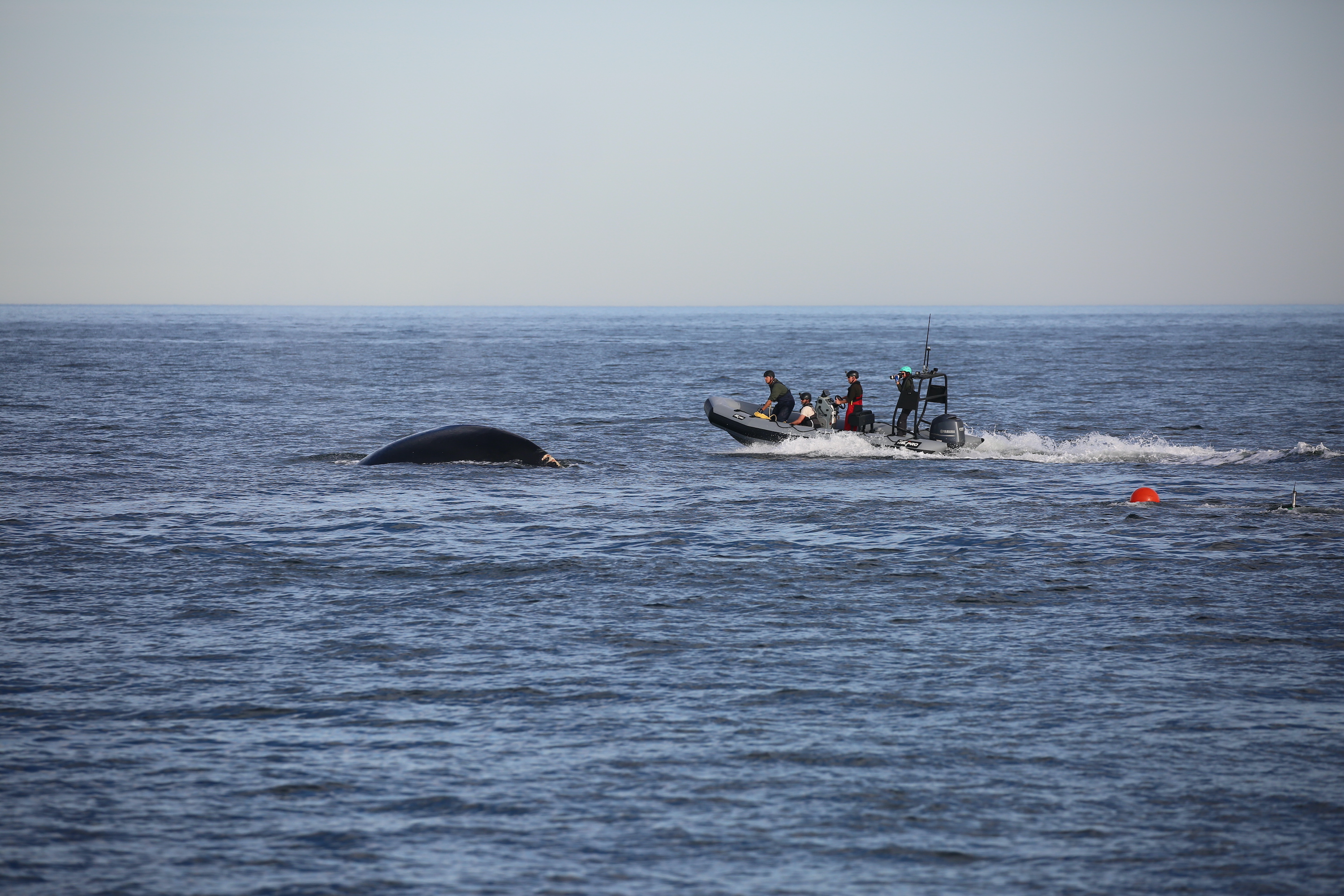
Photo: FWC w/ NOAA permit #24359
Responders Mark Dodd, Trip Kolkmeyer, Clay George, and Jen Jakush approach Nimbus in a rigid-hull inflatable Zodiac.
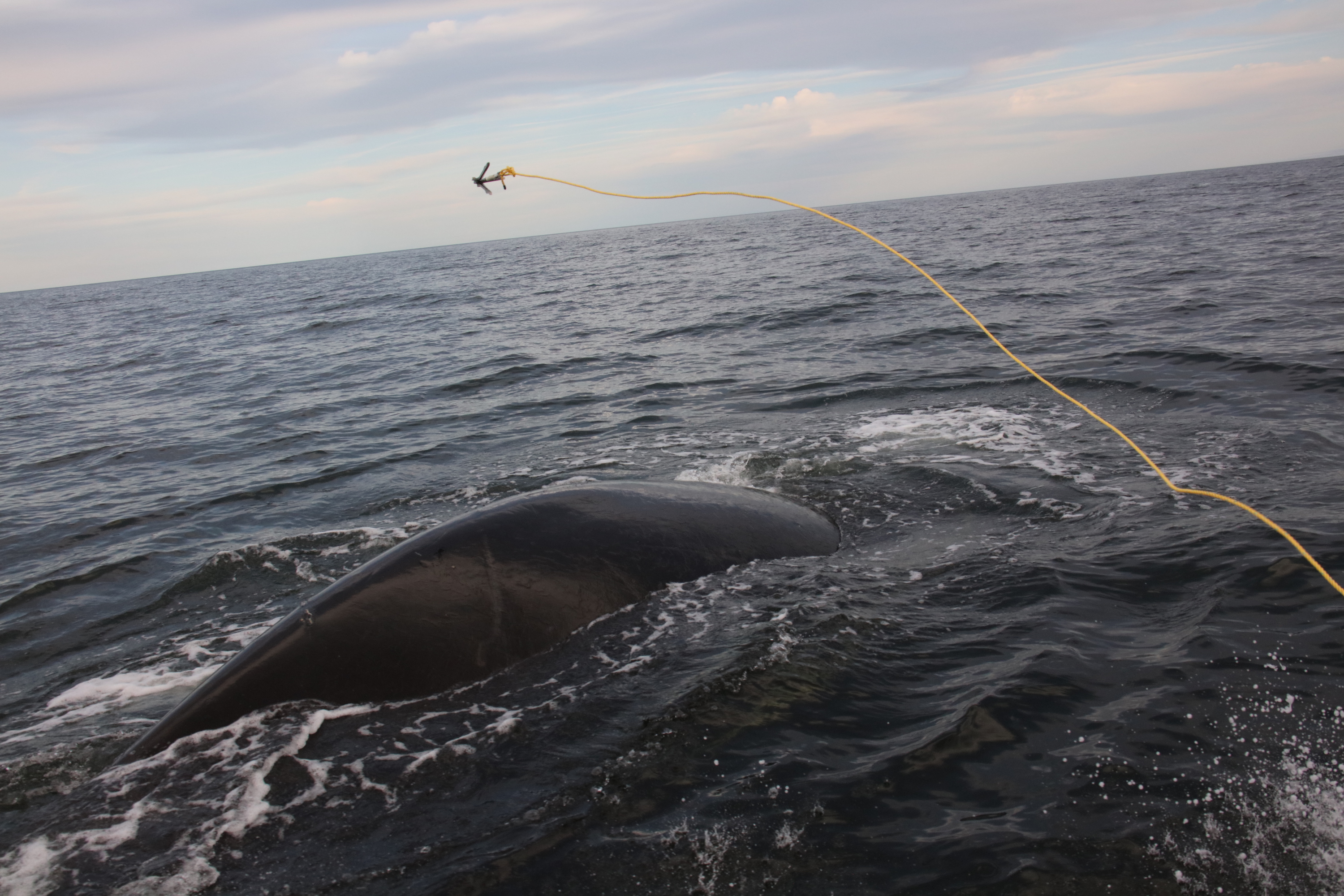
Photo: GDNR w/ NOAA permit #24359
The team needed to get within twenty feet of Nimbus to throw the cutting grapple (shown here) that would sever the entangled rope—no easy feat.
Fortunately they had eyes in the sky. By now White and her team were circling above them, and from her vantage point she could observe Nimbus’s shadowy body or his dappled white nose just before he broke the surface. Then she could radio instructions to the Zodiac: “Whale surfacing. Three boat lengths. Eleven o’clock.”
But Nimbus was evasive, inevitably a boat length out of reach, and the chase dragged on. Squinting through the glare of the late-afternoon sun, White called down instructions as Dodd gripped the razor-sharp grapple and George tried to navigate to what White called the miracle location. But each time, they were met with a disappearing fluke. By five o’clock in the evening, the light and their hopes were beginning to fade. “We were telling each other that this is the ‘nth hour’—we’ve passed the eleventh hour,” White says.
Then, dumb luck: “Whale surfacing. One boat length. Eleven o’clock.” Nimbus popped up ten feet from the Zodiac, as surprised to see them as they were him. “Whales can do this funny thing when they’re coming up and they see somebody,” Dodd says. “They put their flippers up, put their fluke down, and arch their back inward, kind of like putting on the brakes.” This funky little maneuver proved beneficial. The rope on either side of his mouth floated to the surface, Dodd made an easy toss, and Nimbus started to slowly sink, feeling the pressure on the line. Three seconds later, before they had a chance to offload the buoy, the rope gave way and Dodd found himself flat on his back in the boat, staring up at his smiling colleagues.
No one seemed happier than Nimbus, who now towed only half a body-length of rope. He sensed the change immediately. He turned south. He picked up speed. He dove once and then again, his fluke lifting higher than they’d seen all day. Then he was gone, the tracking buoy floating uselessly beside the Zodiac on the severed rope.
[Continue reading below]
Given stereotypes about bleeding-heart whale huggers, one might assume Melanie White is emotionally invested in the fate of each animal she encounters. But when asked how she would have felt had the team failed to help Nimbus, her answer is pragmatic. “We’re here to do everything we can, to assist as much as possible for as long as possible. If it is a successful event, that is fantastic. If it’s not, we know we put everything into it that we could.”
It’s a necessary attitude in a line of work that can feel Sisyphean. Consider the progeny of Pediddle: A previous daughter was killed by boat strike while caring for her own calf. Pediddle’s granddaughter was the ill-fated Snow Cone. Her great-grandson Cottontail was recently found dead, wrapped in rope, near Myrtle Beach. And yet, Pediddle has two living granddaughters of calf-bearing age, Chiminea and Sickle, and she herself is still calving and has been for forty years. She is a poster child for the exponential impact saving just one North Atlantic right whale can have.
George hopes to relocate and biopsy Pediddle’s new calf in the coming weeks, before the pair heads north to feed off the coast of New England and Canada. He also hopes to encounter a young whale recently spotted near North Carolina with a life-threatening entanglement. “She’s female,” he says, “so we’re all hopeful she’ll show up at some point and we might be able to do something for her.”
He believes North Atlantic right whales’ time isn’t up yet, that there’s opportunity to change the mortality side of the equation. But doing so will take more than the work of a few dedicated marine biologists. “We have all these special tools and training and do what we can to disentangle these whales, but really the solution is prevention,” he says. That means policy change and the adoption of new fishing technology like ropeless lobster traps.
Still, given the species’ critically low numbers, it seems fair to say that if our children’s children get to coexist with these animals, it will be because of the hands-on heroism of their fiercest defenders, the ones who held the line. The ones like George, White, Dodd, Joe Howlett, and their partners and colleagues up and down the East Coast who, as the sun set at the nth hour, went out and did everything they could.



